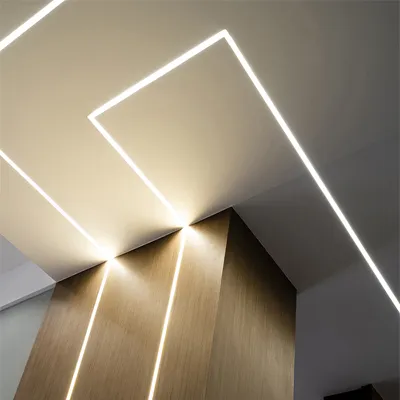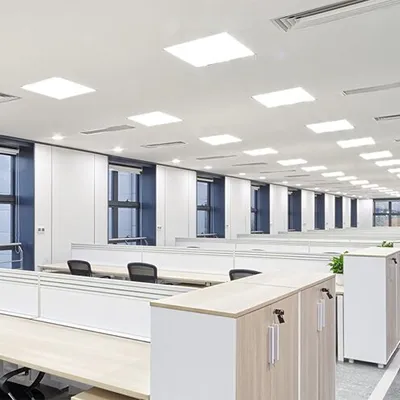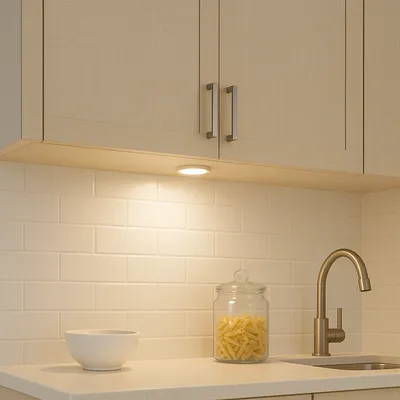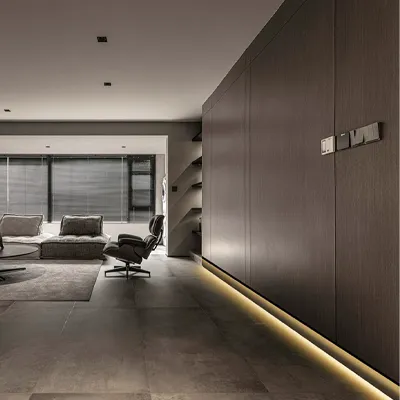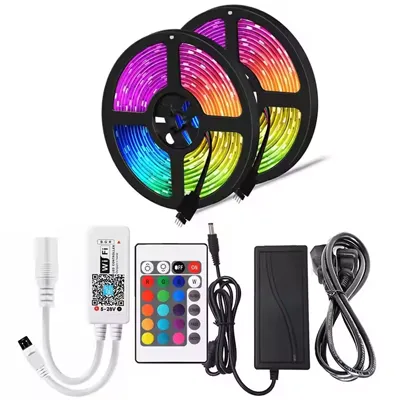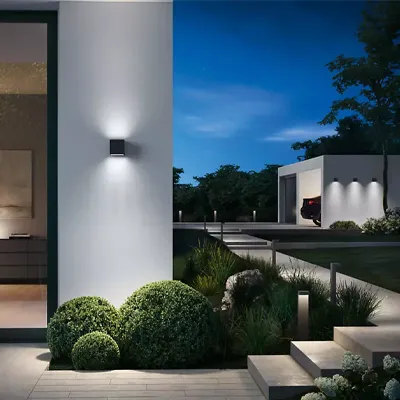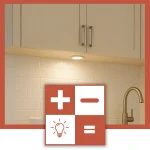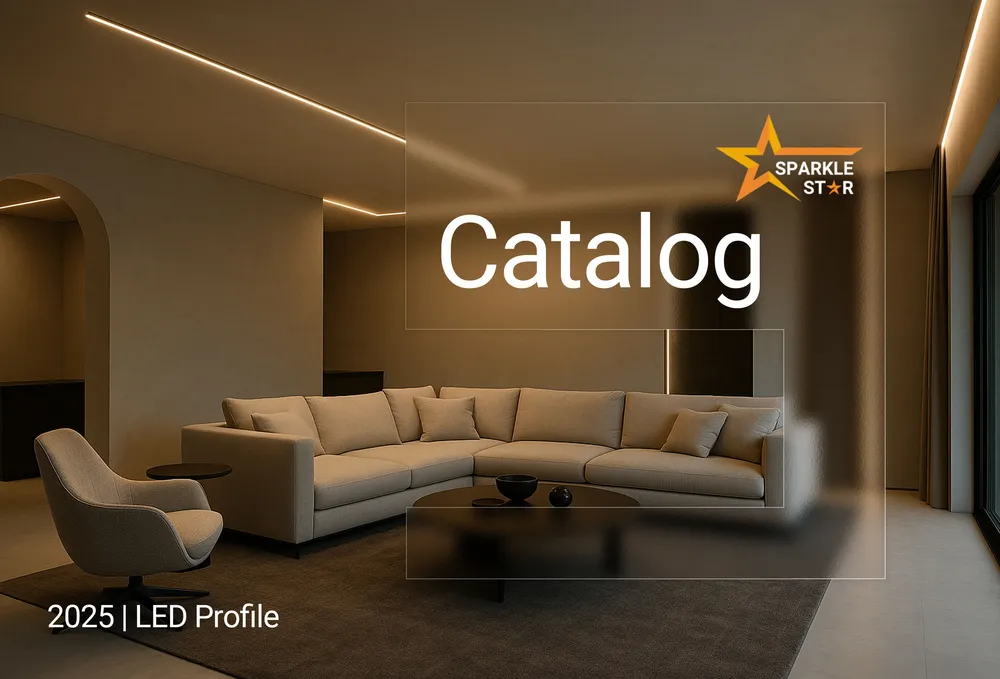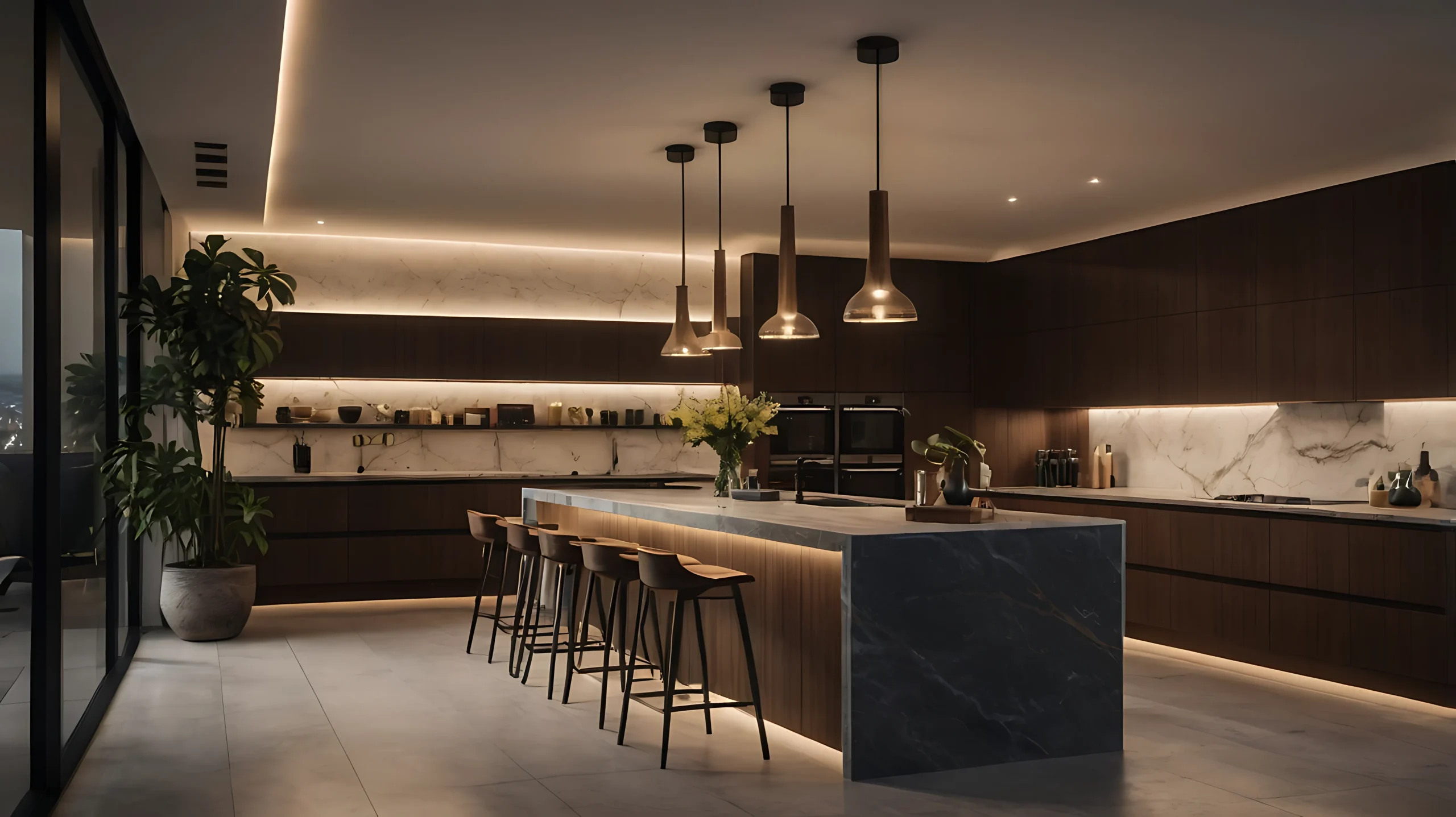
LED strip lights are a favorite for modern lighting. Their popularity comes from amazing flexibility. They also excel at creating a unique atmosphere.However, buying them for the first time can be confusing. You might see huge price differences. Plus, the required accessories often seem complex. Why do some strips cost just a few dollars per meter? And why are others several times more expensive? What is the total budget required for a complete project?
This article fully explains the "LED Strip Light Cost Breakdown." First, we will analyze the strip's price composition. Then, we'll cover hidden fees for accessories and installation. We also estimate long-term electricity costs. Finally, this guide offers tips for smart purchasing. Ultimately, you will understand the real cost beyond the price per meter, linking the unit price to your total budget.
1. LED Strip Types and Typical Price Ranges
First, we need to understand that not all LED strips are created equal. Their price primarily depends on their core functions and technical specifications. There is a wide variety of strips on the market, and different types naturally have different costs due to their technological and structural differences. To give you a general idea when conducting your "LED strip price breakdown," here is a rough market reference for mid-2025:
- Basic Single-Color Strips: These are the most common type, emitting only one color of light (like warm white or cool white). They have a simple structure and are an economical choice for creating basic ambient lighting. Their price is typically between $3 – $8 per meter.

- RGB / RGBW Strips: These strips can change to multiple colors. RGB strips consist of red, green, and blue chips, while RGBW adds a separate white chip for a purer white light. Their technology is more complex, so their price is higher, around $8 – $15 per meter.
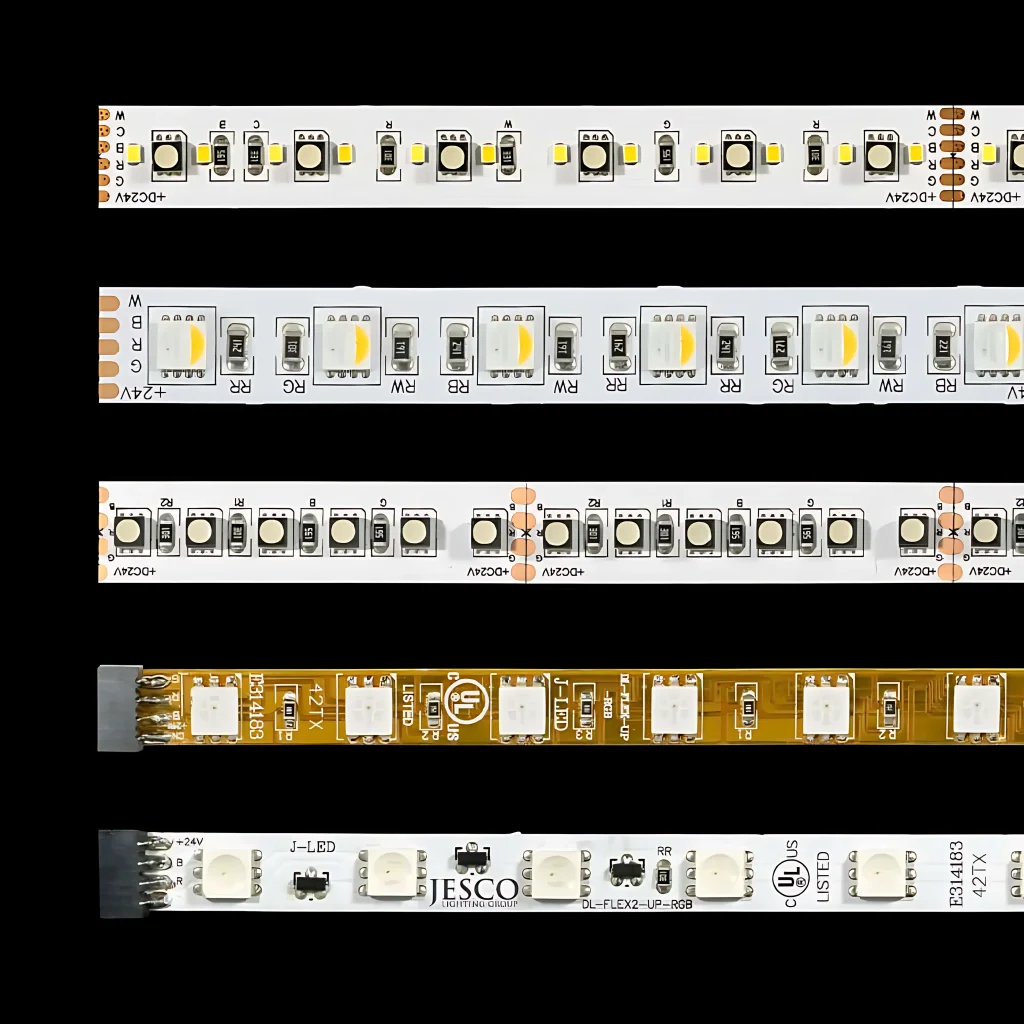
- High-Quality Strips: If you are pursuing more professional lighting effects, such as ensuring that the colors of objects under the light are not distorted (High CRI >90) or hoping for a completely uniform light with no graininess (high-density, like COB strips), the price of these products will be higher, usually in the range of $10 – $20 per meter or more.
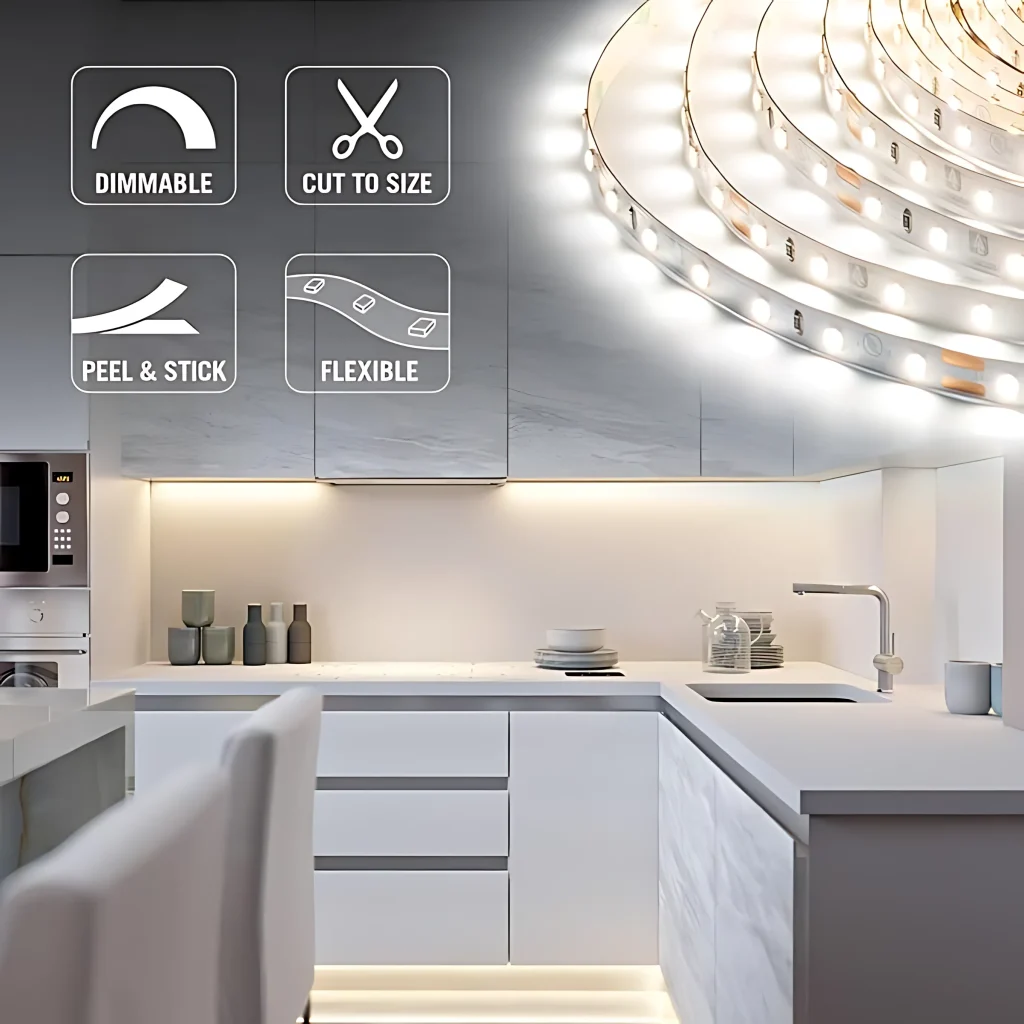
- Waterproof Treatment: If the strip needs to be used in a humid or outdoor environment, its surface waterproof treatment (like silicone coating or tubing) will add extra cost, typically an additional $2 – $5 per meter.
2. A Deeper Dive into the Cost Composition
The cost behind a small LED strip is far more complex than it appears. A complete "LED strip cost analysis" must go deep into every aspect of its materials and accessories.
2.1 Core Components and Manufacturing Costs
The price of the strip itself is mainly determined by the following core components, and the quality differences between them are the fundamental reason for the price disparities:
- LED Chips: This is the core of the cost. High-quality LED chips are not only brighter and more energy-efficient, but their color consistency and lifespan also far exceed those of low-end chips. Cheap strips may use recycled or lower-grade chips, which may not be noticeable at first but will soon show light decay or color differences.
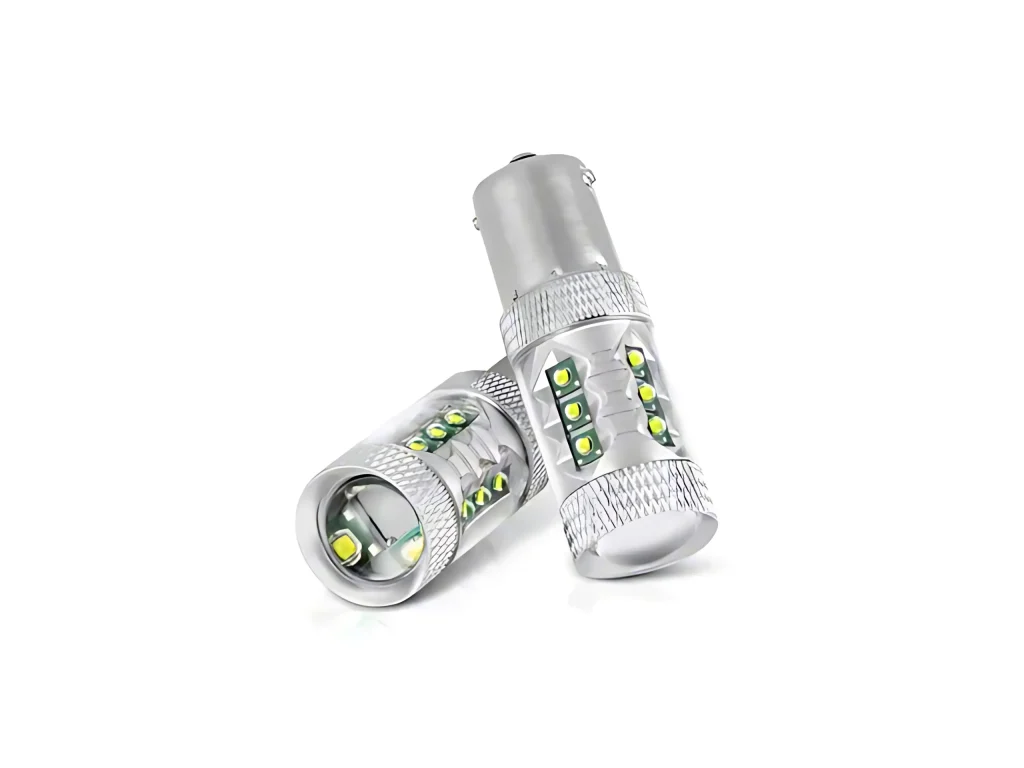
- Flexible Printed Circuit Board (FPC): This is the flexible "tape" that carries the LED chips. Its material and the thickness of the copper are crucial. For example, an FPC with 2 ounces (oz) of copper has better electrical conductivity and heat dissipation than one with 1 ounce, much like a wider highway can carry more traffic. This directly affects the strip's stability and durability, but also costs more.
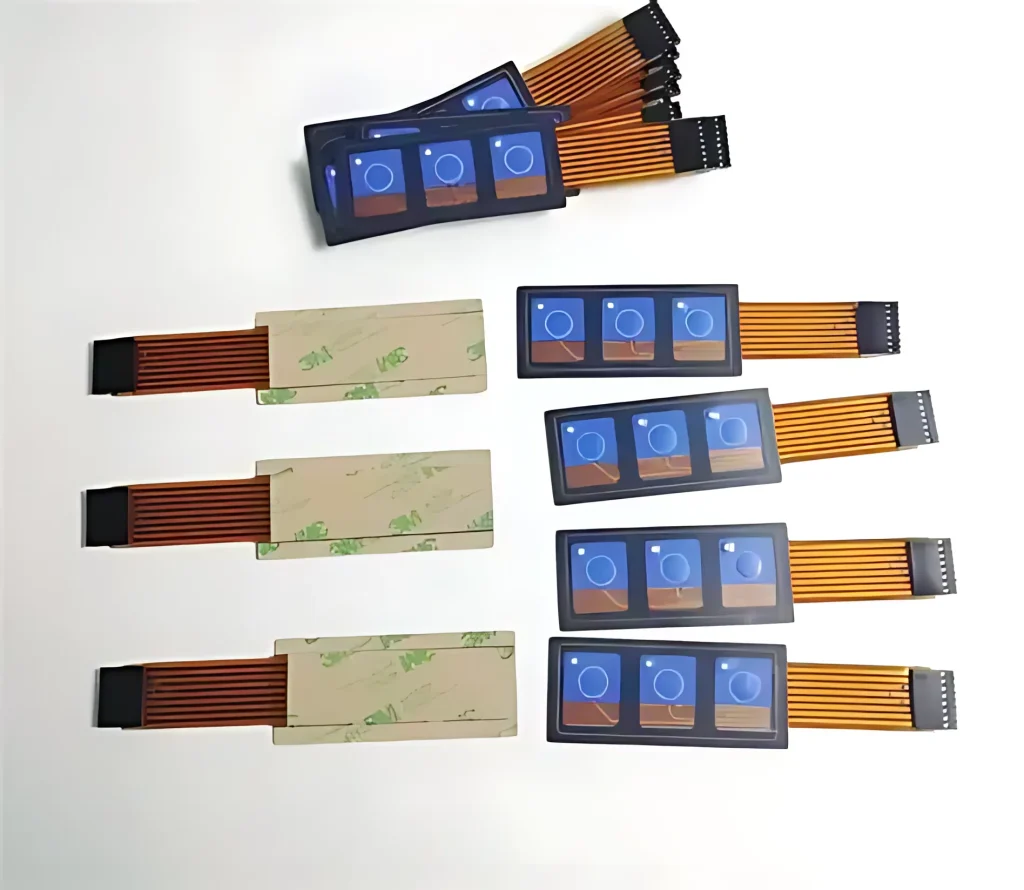
- Waterproofing Process: According to the IP rating standards, the cost of different waterproof treatments varies significantly. The surface coating process for IP65 is relatively cheap, while the silicone tubing for IP67 or the more advanced full injection molding for IP68 provides stronger protection, and the cost increases accordingly.
2.2 Additional Accessories and Hidden Fees
The strip itself usually cannot work alone; you also need a series of necessary accessories, which are often the "hidden costs" in a budget. The total price of these accessories can sometimes even exceed the price of the strip itself.
- Power Supply (Driver): This is the heart of the strip, responsible for converting household AC power into the low-voltage DC power the strip needs. A reliable, adequately powered driver can cost between $15 – $60.
- Controller/Dimmer: You need this if you want to adjust the strip's brightness or color. A simple remote control might not be expensive, but a complex controller that supports smart home integration can cost upwards of $60.
- Profiles & Accessories: For better heat dissipation and a more uniform light effect, it's often recommended to install the strip inside an aluminum profile. Add in extension cables, corner connectors, and other accessories, and this part of the total cost can range from $5 – $50, depending on the complexity of the project.
Table: Cost Structure and Reference Fees
Item | Typical Cost Range (USD) | Notes |
|---|---|---|
LED Strip (Single Color) | $3 – $8 /m | Basic ambient lighting |
RGB/RGBW Strip | $8 – $15 /m | Multi-color changing function |
High-Quality Strip | $10 – $20+ /m | High CRI or COB |
Waterproof Surcharge | +$2 – $5 /m | Depends on IP rating |
Power Supply | $15 – $60 | A major part of the budget |
Controller/Dimmer | $15 – $60+ | Smart or multi-functional is pricier |
Accessories (Profiles/Connectors) | $5 – $50 | Varies by project needs |
Professional Installation | $200 – $500 (per project) | Higher for complex projects |
3. Installation Methods and Labor Cost Differences
The "LED strip installation cost" is highly flexible. This part of your budget depends on one key choice. Will you do it yourself, or hire a professional?
A DIY installation is a great way to save money. In fact, it completely eliminates all labor costs. This is very practical for small and simple projects. For instance, sticking a strip behind a desk is easy. The same goes for mounting one behind a TV. You only need a few basic tools for the job. You also need a basic grasp of electrical safety.
However, some projects are much more complex. This includes recessed installations or multi-zone wiring. It also applies to any hardwiring scenario. For these jobs, hiring a pro is strongly recommended. You should find a licensed, professional electrician.
According to industry data, electricians often charge between $50 to $150 per hour. Therefore, a complete installation can have a significant labor cost. A moderately complex project usually costs $200 to $500 or more.
Let's look at a specific example. Suppose you buy 10 meters of high-quality RGB strips. This might cost around $150. You also need a power supply and controller, about $100. Then, add profiles and connectors for roughly $50. Now, imagine you hire a professional for a recessed installation. This job could take 3-4 hours. The labor cost alone might reach 200-400. In this case, your total project budget would easily approach $500 to $700.
4. Estimating Electricity Consumption (Power Cost)
The good news is that LED strips are very energy-efficient, and their long-term running electricity cost is negligible. Calculating the electricity cost is simple; you just need to know the strip's power, which is usually marked on the product specifications in "watts per meter" (W/m).
For example, let's calculate the monthly electricity cost for a 5-meter strip with a power of 14.4W/m:
- Total Power: 14.4 W/m × 5 m = 72 W
- Daily Consumption: 72 W × 8 hours/day = 576 Wh
- Monthly Consumption: 576 Wh × 30 days = 17,280 Wh
- Convert to kWh: 17,280 Wh ÷ 1000 = 17.28 kWh
Based on an average U.S. electricity price of about $0.12/kWh, the monthly electricity cost for this strip is approximately: 17.28 kWh × $0.12 ≈ $2.08. In comparison, the energy efficiency of LEDs is extremely high, reaching 80-90%, which is up to 85% more energy-saving than traditional incandescent or fluorescent lamps. Therefore, you don't need to worry about it leading to high electricity bills.
Please Note: The power cost estimate in this article is calculated using the average U.S. electricity rate. Rates may vary slightly by city, and will differ in other countries. Please use your local electricity rate for an accurate calculation. The figures provided here are for reference purposes only.
5. How to Reduce Expenses and Improve Cost-Effectiveness
- Choose Based on Need: If you only need basic ambient lighting, a cost-effective single-color strip is sufficient; there's no need to spend extra on RGB functions you won't use often.
- Smart Control: Using a dimmable controller to lower the brightness as needed not only creates different atmospheres but also effectively saves power.
- Bulk Purchasing: If you need to decorate a large area, purchasing a longer length of strip at once can often get you a better unit price.
- Focus on Quality, Not Just Price: Proactively ask for the product's bill of materials (BOM), request samples for testing, and confirm whether the product has passed safety certifications like CE and RoHS. This is the most effective way to avoid buying "low-price, low-quality" products.

6. Conclusion and Call to Action
In summary, a complete "LED Strip Light Cost Breakdown" is far more than just the unit price of the strip itself. It is a comprehensive budget that covers the cost of core materials, necessary accessories, installation labor, long-term electricity consumption, and quality assurance. After fully understanding each part, you can more rationally evaluate your budget and actual needs, avoiding being misled by superficially "low quotes."
For users who hope to find the perfect balance between quality and price, our LED Strip product line offers a rich selection. We provide various combinations of color temperature, density, and power, aiming to balance excellent performance with high energy efficiency. This allows you to easily customize the ideal solution for your specific application—be it background ambient lighting, functional cabinet lighting, or commercial display lighting—without getting bogged down in complex details.
You are welcome to use the cost calculation methods in this article to plan your project, or you can contact us directly to get a professional quote and sample support to get your lighting project started smoothly.
7. Frequently Asked Questions (FAQ)
Q: Why are some LED strips quoted very cheaply but have poor quality?
A: This is likely because they use low-grade LED chips (low brightness, short lifespan, color inconsistency), thin copper FPC boards (poor heat dissipation, easily damaged), and have not undergone rigorous aging tests. To ensure quality, it is recommended that you check the detailed specifications and request samples for comparison before purchasing.
Q: Do different color temperatures consume different amounts of power?
A: Theoretically, at the same technological level, the luminous efficacy of cool white light is usually slightly higher than that of warm white light, but this difference is almost negligible in daily use. Therefore, when choosing, you should prioritize the overall lm/W (lumens per watt) parameter of the strip, rather than getting caught up in the color temperature.
Q: Will the strip overheat during long-term operation? Will this affect its lifespan?
A: It can. If the strip has high power and is installed in an environment with poor heat dissipation, overheating will accelerate the light decay of the LED chips, thus shortening its lifespan. Therefore, for high-power strips, it is strongly recommended to use an aluminum channel profile to assist with heat dissipation. Under good thermal conditions, a high-quality LED strip can typically have a lifespan of 30,000 to 50,000 hours.


